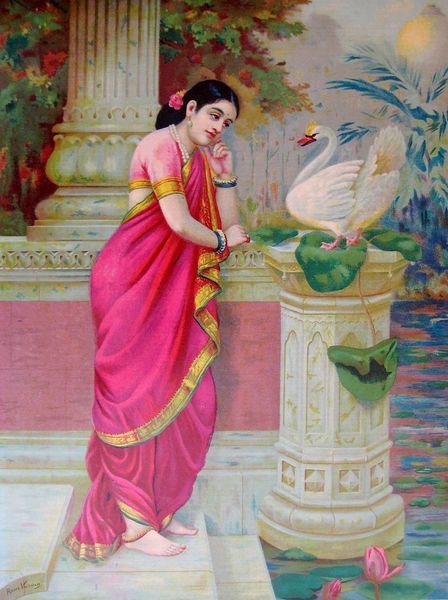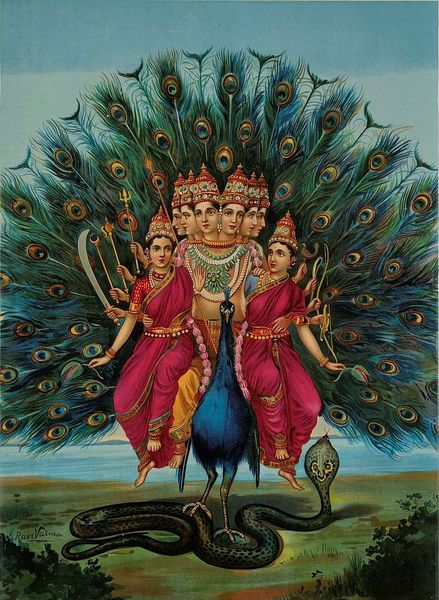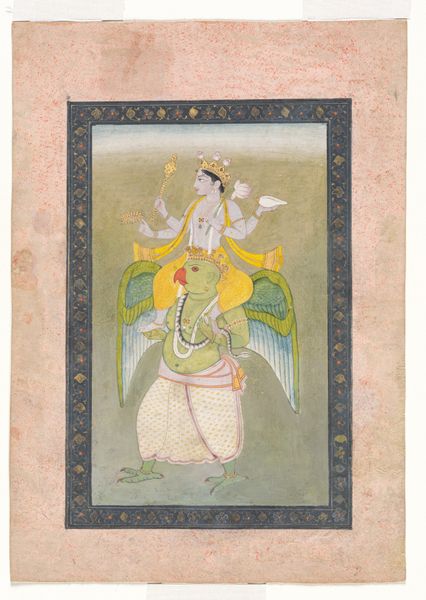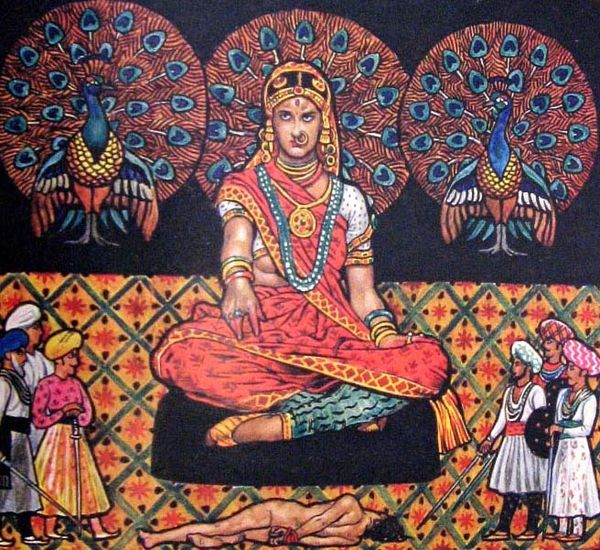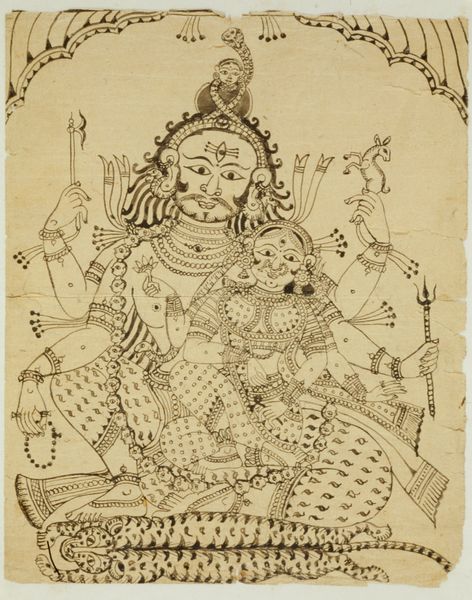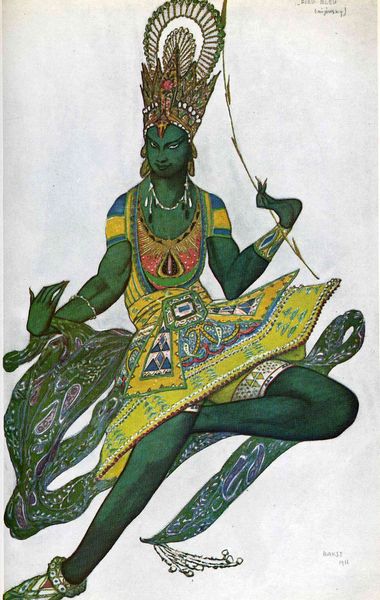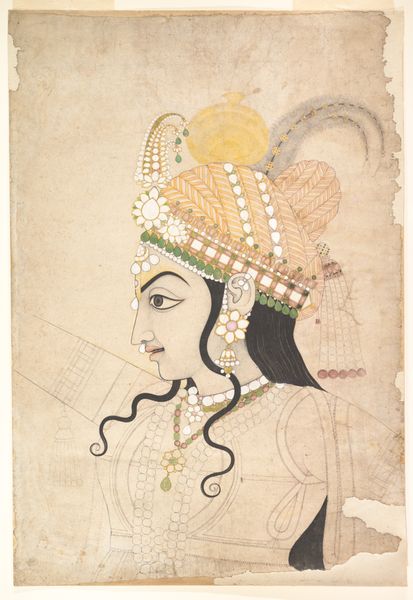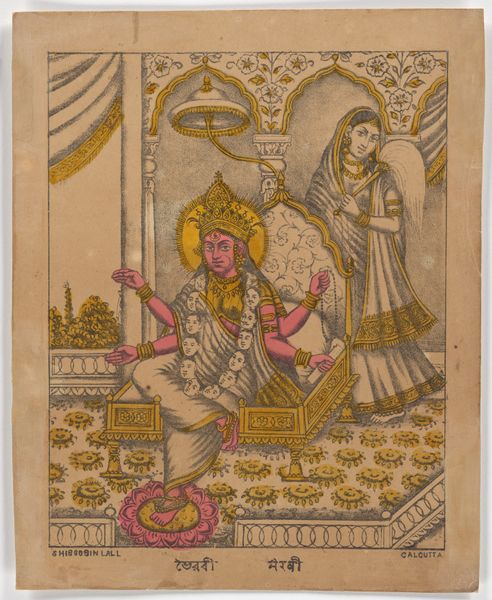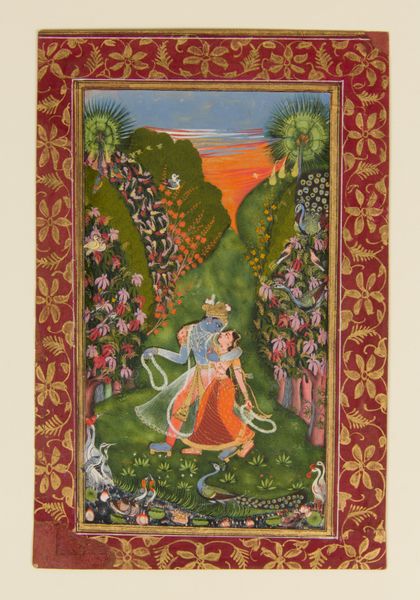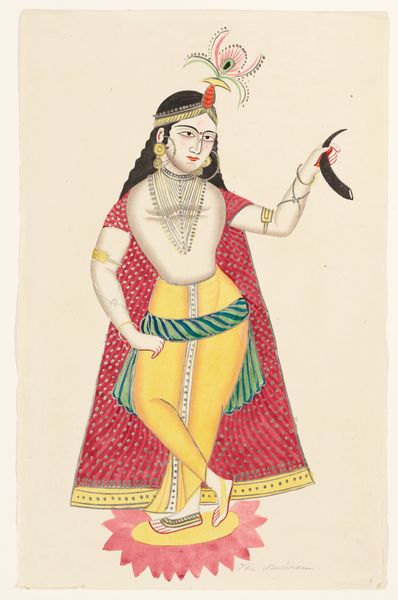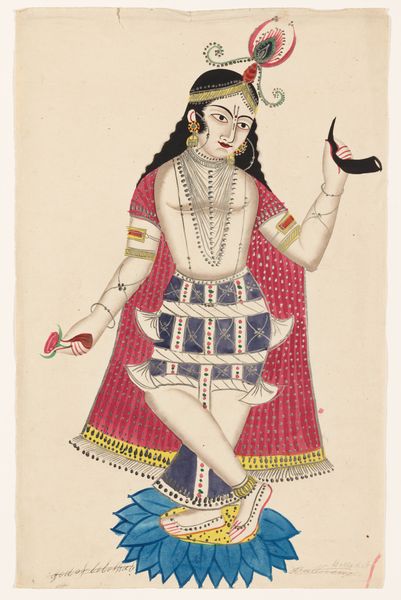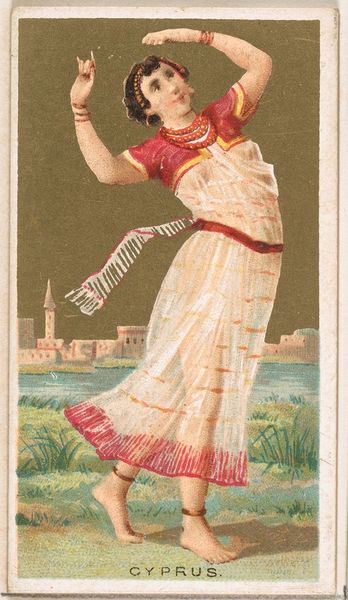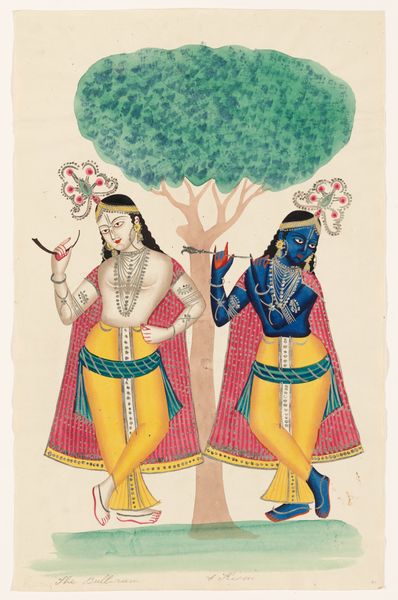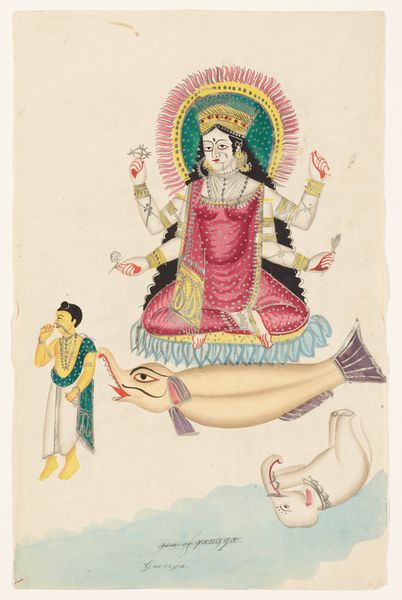
#
abstract painting
#
fictional-character
#
impressionist landscape
#
oil painting
#
fluid art
#
acrylic on canvas
#
naive art
#
animal drawing portrait
#
surrealist
#
portrait art
#
fine art portrait
Copyright: Public domain
Editor: Here we have Raja Ravi Varma's "Lakshmi, the goddess of wealth", painted in 1906. It’s… well, it's quite literal in its depiction, almost like a scene from a play. How would you interpret the composition of this work? Curator: The arrangement presents a hierarchical structure. Note how the artist positions Lakshmi at the visual apex, grounded yet elevated by the lotus. Consider also how Varma balances symmetry and asymmetry. The elephants flanking her are not identical, and the scattering of lotus blossoms creates a gentle visual rhythm. Editor: The colours are so vibrant! The pinks and golds especially. Were these choices simply aesthetic? Curator: I think not. Pinks and golds may represent purity and prosperity. Moreover, Varma masterfully modulates these hues across the canvas. Study the subtle gradations in Lakshmi's sari, shifting from rose to peach to convey depth and texture. He guides your eye deliberately. Editor: So, it's less about *who* Lakshmi is and more about *how* Varma constructs this image of her? Curator: Precisely. Varma focuses on the interplay between line, colour, and form to evoke a sense of divinity. It is about pictorial strategies that invite the viewer into a contemplative state. Editor: I hadn't considered how much the colours contribute to the painting's overall message, it's fascinating how the visual elements all work together. Curator: Indeed, by isolating the formal components, we access a richer understanding of the work's artistic intention.
Comments
No comments
Be the first to comment and join the conversation on the ultimate creative platform.
